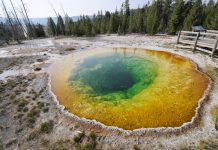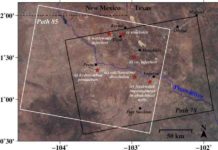
Life on Earth may have sprung from bombardment by a youthful Sun lashing out with flares as potent as a thousand trillion exploding atomic bombs, a study suggested on Monday.
Such violence may explain how Earth became hospitable to life about four billion years ago, when the planet, and its star, were much, much colder, a research team wrote in the journal Nature Geoscience.
While the Sun was about a third fainter than it is today, it was likely much more tempestuous, they found.
Repeated super-flares would have smashed nitrogen (N2) molecules in the atmosphere to yield a planet-warming greenhouse gas called nitrous oxide (N2O or “laughing gas”), as well as hydrogen cyanide, which produces amino acids—the building blocks of proteins.
While it is essential for all life, nitrogen in the form it would have existed in a young Earth’s atmosphere is not chemically reactive, and needs to be transformed into more accessible forms.
Very high temperatures can achieve this.
The study was based on telescopic observations of other stars resembling our Sun in the first few hundred million years of life, as well as models of the chemistry of early Earth’s atmosphere.
Without an efficient greenhouse gas to trap the Sun’s heat, “Earth would be a snowball rather than a wet and warm planet supporting life four billion years ago,” study co-author Vladimir Airapetian explained.
The new model “resolves the currently unresolved ‘Faint Young Sun’ paradox by efficient production of laughing gas in the lower Earth’s atmosphere” at the time.
“Our model describes the ‘cosmic’ ingredient required to produce biological molecules of life,” Airapetian told AFP by email.
And it suggested that other planets subjected to similar violence by their star may have had similar outcomes.
“Geologic evidence suggests that Mars was also paradoxically warm and wet around the same time,” planetary scientist Ramses Ramirez of the Carl Sagan Institute in New York noted in a comment on the study.
It may have experienced “similar solar-atmospheric interactions” than Earth.
“The findings may have implications for the climates and potential biology of terrestrial exoplanets orbiting very young Sun-like stars, particularly stars with exceptionally high magnetic fluxes and very intense super stellar storms,” said Ramirez.
Reference:
Prebiotic chemistry and atmospheric warming of early Earth by an active young Sun, Nature Geoscience, DOI:10.1038/ngeo2719
Note: The above post is reprinted from materials provided by AFP.










